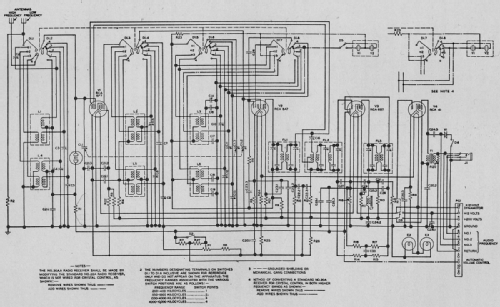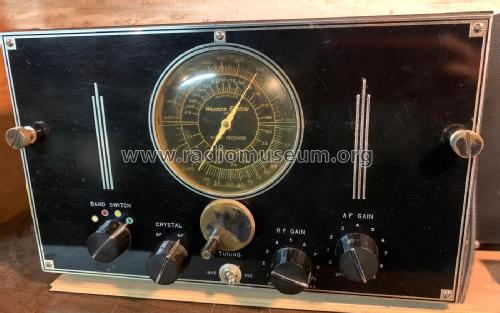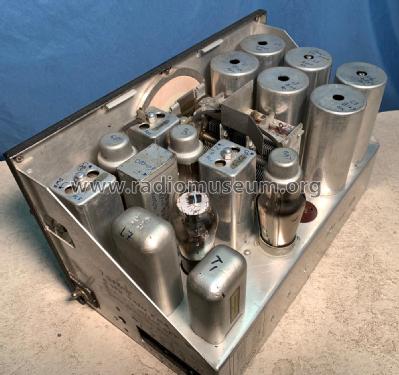20A aircraft receiver base station version
Western Electric Company Inc.; New York (NY)
- País
- Estados Unidos
- Fabricante / Marca
- Western Electric Company Inc.; New York (NY)
- Año
- 1936 ?
- Categoría
- Receptor para radioaficionados (puede incluir bandas de radiodifusión publ.)
- Radiomuseum.org ID
- 314656
Haga clic en la miniatura esquemática para solicitarlo como documento gratuito.
- Numero de valvulas
- 4
- Principio principal
- Superheterodino con realimentación; ZF/IF 96 kHz; 2 Etapas de AF
- Número de circuitos sintonía
- 2 Circuíto(s) AM
- Gama de ondas
- OM, OL y dos OC
- Tensión de funcionamiento
- Alimentado desde otro equipo o aparato principal. / 200 vdc & 12 vdc Volt
- Altavoz
- - Este modelo usa amplificador externo de B.F.
- Material
- Metálico
- de Radiomuseum.org
- Modelo: 20A aircraft receiver [base station version] - Western Electric Company Inc.;
- Forma
- Formas varias descritas en notas aparte.
- Ancho, altura, profundidad
- 13 x 8 x 9 inch / 330 x 203 x 229 mm
- Anotaciones
-
Amelia Earhart used this model aircraft radio receiver on her ill-fated 1937 flight from New Guinea to Howland Island in the Pacific. It was available in the base station configuration you see here. With the face plate removed, a mechanism could be installed that made it possible to control the radio from the cockpit by mechanical remote control. Some say that the shortcomings of this radio contributed to the failure of the flight.
The manufacturer's intention was to create a radio that was compact and light weight. They did several things to accomplish this. They used a 6F7 dual function tube that served as both an RF and IF amplifier. They included regeneration to increase gain. They used a 6B7 tube that served four functions (IF amplifier, 2nd detector, AVC), then after demodulation the audio signal was passed through the tube again for amplification. The circuit was very compact and difficult to trace and troubleshoot. The compactness could lead to internal feedback problems.
The output was through headphones and required two antennas. (high and low frequencies). The output tube was a type 41. The power requirement was 200 VDC and 12 VDC provided by a generator run by one of the engines.
The case is a rectangular aluminum box (removed in photos).
- Peso neto
- 15 lb (15 lb 0 oz) / 6.810 kg
- Documentación / Esquemas (2)
- - - Manufacturers Literature
- Autor
- Modelo creado por Ron Boucher. Ver en "Modificar Ficha" los participantes posteriores.
- Otros modelos
-
Donde encontrará 171 modelos, 150 con imágenes y 32 con esquemas.
Ir al listado general de Western Electric Company Inc.; New York (NY)
Colecciones
El modelo 20A aircraft receiver es parte de las colecciones de los siguientes miembros.


